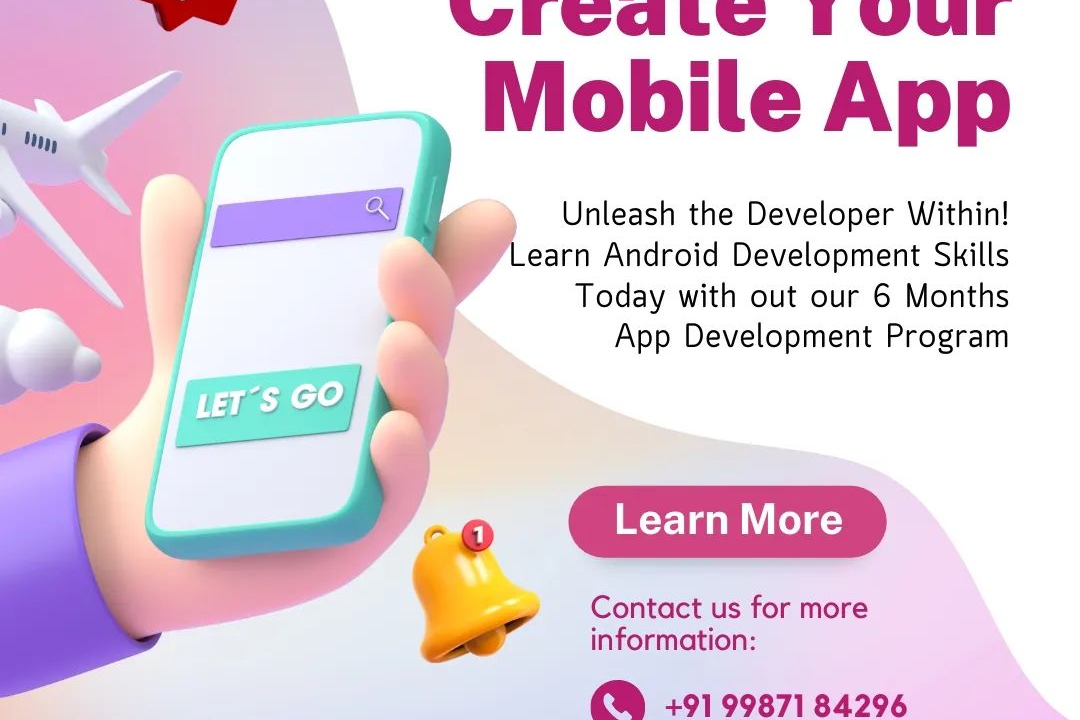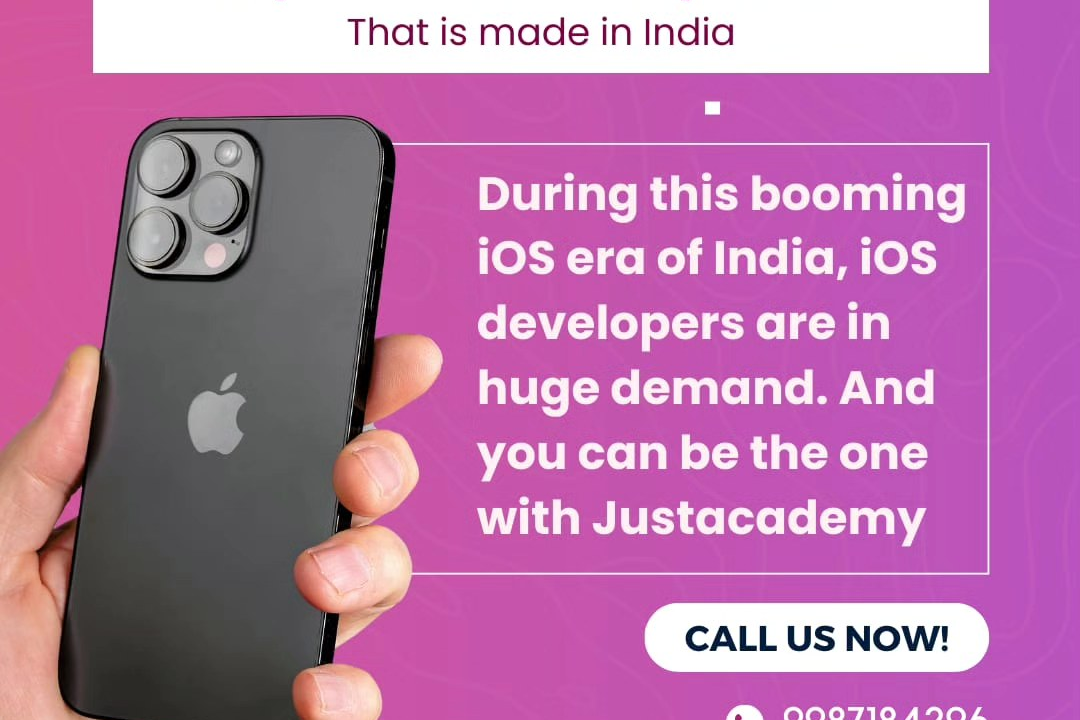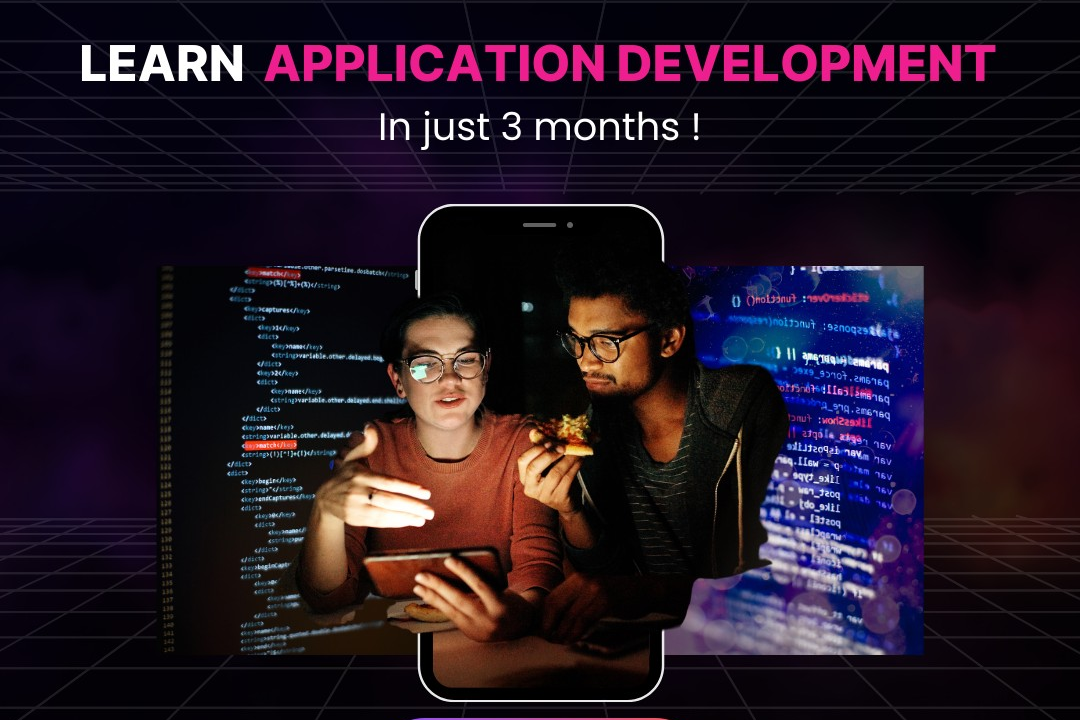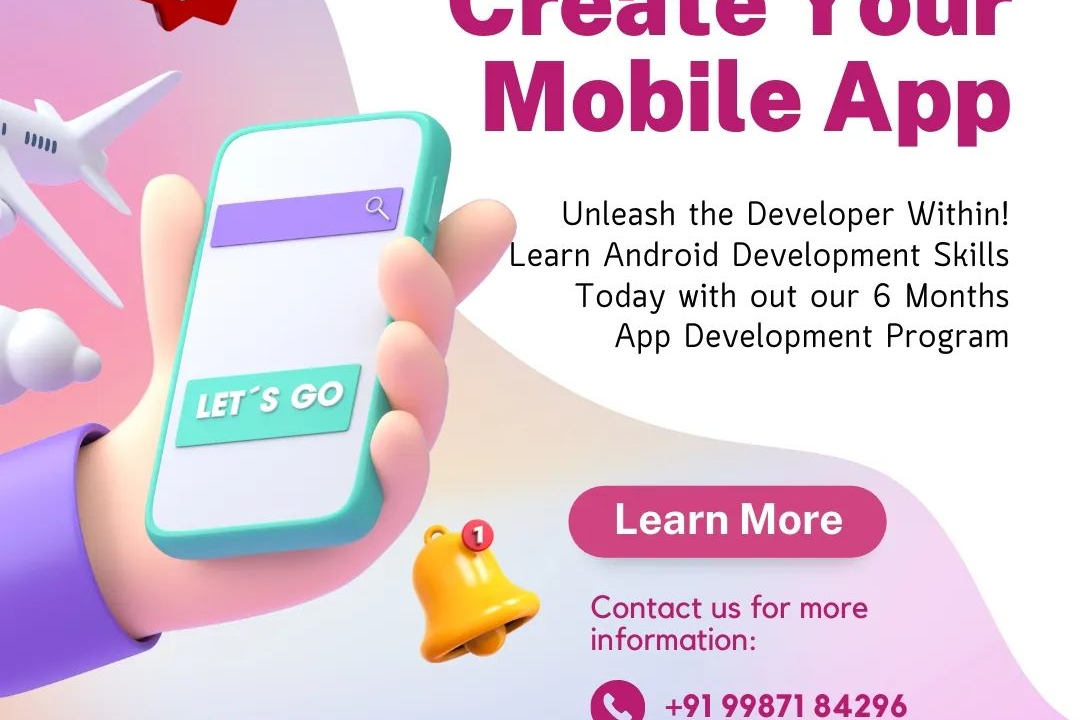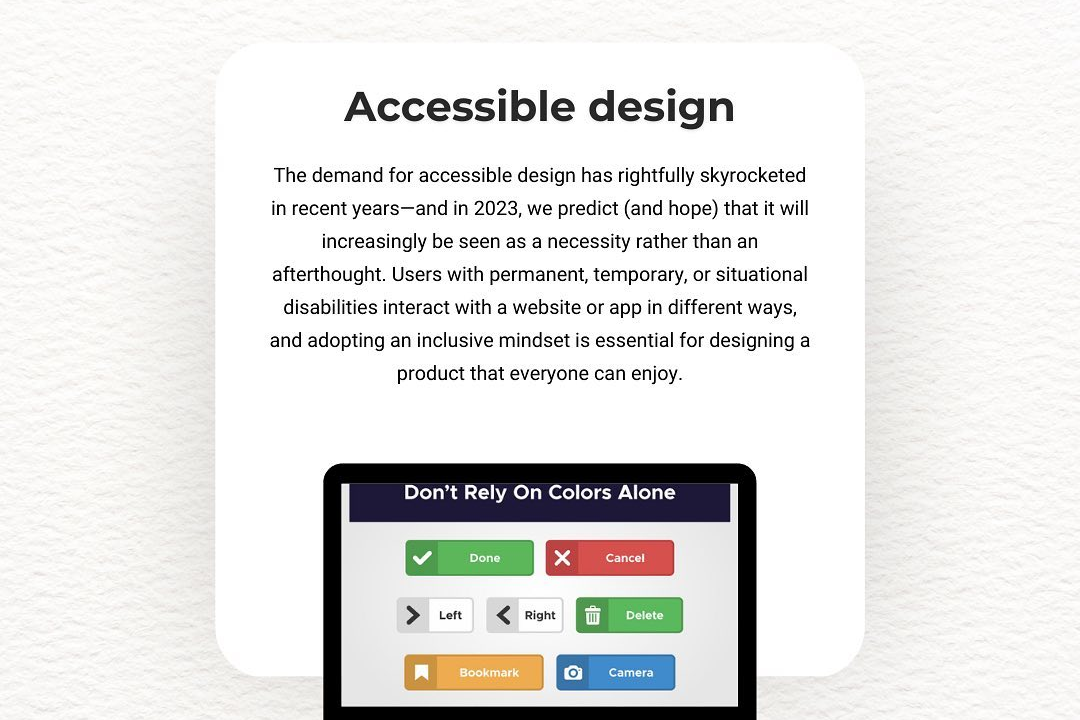Agile Methodology In Mobile Development
Enhancing Mobile Development: The Power of Agile Methodology
Agile Methodology In Mobile Development
Agile methodology in mobile development is a framework that promotes iterative progress, collaboration, and flexibility, making it particularly suitable for the dynamic nature of mobile app projects. By breaking down the development process into manageable sprints, teams can deliver incremental updates, respond swiftly to user feedback, and adapt to changing market demands. This iterative approach not only facilitates continuous improvement and innovation but also enhances communication among team members and stakeholders. As a result, Agile methodology fosters a more efficient workflow, ultimately leading to higher quality mobile applications that better meet user expectations.
To Download Our Brochure: https://www.justacademy.co/download-brochure-for-free
Message us for more information: +91 9987184296
1 - Agile methodology emphasizes iterative development, allowing teams to produce working versions of mobile applications in short cycles. 2) It encourages cross functional teams, where developers, designers, and stakeholders collaborate closely throughout the project. 3) Regular feedback from users and stakeholders ensures that the product evolves based on real needs and expectations. 4) Agile promotes flexibility, allowing teams to pivot or make adjustments as requirements change or new insights are gained. 5) Daily stand up meetings enhance communication, keeping everyone aligned on goals and progress. 6) Sprints typically last 1 4 weeks, culminating in a review where teams can showcase their work. 7) The focus on minimal viable products (MVPs) helps teams deliver core functionalities quickly, validating the app's value early on. 8) Agile helps manage risk more effectively by identifying potential issues early in the development process. 9) Continuous integration and deployment practices enable rapid delivery of updates and new features. 10) Agile frameworks, like Scrum and Kanban, provide structured approaches to managing tasks and workflows. 11 - Documentation in Agile is concise and focused on what is necessary for team collaboration, reducing overhead. 12) Agile encourages a culture of continuous learning and adaptation, fostering innovation within teams. 13) The use of user stories helps prioritize features based on user value and business goals. 14) Retrospectives at the end of each sprint allow teams to reflect on their processes and identify areas for improvement. 15) Overall, Agile methodology enhances customer satisfaction, providing more value through quicker delivery of functional mobile applications.
16) Agile methodology supports incremental delivery, where new features can be added over time without disrupting the entire application.
17) The emphasis on user collaboration and early involvement helps teams understand customer needs better and build applications that truly align with user expectations.
18) Agile methodologies like Extreme Programming (XP) focus on engineering practices that improve software quality and responsiveness to changing requirements.
19) Adaptation to change is a cornerstone of Agile; teams can easily adjust their plans based on market feedback or evolving business strategies.
20) Agile encourages the use of prototyping and wireframing early in the design phase, enabling teams to visualize ideas and gather feedback before fully committing to development.
21 - The ability to prioritize and re prioritize tasks based on business value ensures that high impact features receive attention first, optimizing resource allocation.
22) Agile practices often leverage automation tools to streamline repetitive tasks such as testing and deployment, increasing efficiency and reducing errors.
23) Collaborative tools and platforms facilitate real time communication, allowing remote teams to work together seamlessly, regardless of location.
24) Agile values individuals and interactions over processes and tools, fostering a strong team culture and ensuring everyone feels valued.
25) The transparency inherent in Agile practices, such as maintaining a visible product backlog, increases accountability among team members.
26) Stakeholder involvement is actively encouraged, ensuring that business priorities are continually aligned with development efforts.
27) Agile methodologies promote a culture that embraces failure as a learning opportunity, allowing teams to iterate and improve rapidly.
28) The focus on sustainable development practices ensures that teams remain productive and engaged without the risk of burnout.
29) Continuous feedback loops create a responsive environment, enabling teams to quickly address and resolve any emerging issues.
30) Agile environments often leverage data driven decision making, using metrics and user analytics to inform development choices and enhancements.
31 - Through regular showcases of work at sprint reviews, stakeholders have the opportunity to provide input and celebrate successes with the team.
32) Emphasizing simplicity in design and execution helps teams avoid unnecessary complexity, allowing for more elegant solutions.
33) Agile training and certification programs, such as those offered by JustAcademy, empower professionals with the skills needed to implement Agile practices effectively.
34) The collaborative nature of Agile fosters creativity and innovation, as team members contribute diverse perspectives and ideas.
35) By breaking down projects into smaller, manageable tasks, Agile reduces the overall risk of large scale projects, allowing for quicker delivery of value.
36) Agile practices encourage ongoing discussion about the project’s direction, continuously aligning the team’s efforts with the organization’s strategic goals.
37) The iterative nature of Agile leads to shorter time to market, allowing companies to capitalize on opportunities and gain a competitive edge.
38) Agile empowers teams to take ownership of their processes, encouraging self management and greater responsibility for outcomes.
39) Emphasizing quality throughout the development process, Agile tends to result in higher customer satisfaction and fewer post launch issues.
40) The ability to deliver incremental updates means that users consistently see enhancements and new features, keeping them engaged with the application.
Course Overview
The “Agile Methodology in Mobile Development” course is designed to equip participants with a comprehensive understanding of Agile principles and practices tailored specifically for the mobile development landscape. Participants will explore the Agile framework, emphasizing iterative development, user collaboration, and continuous feedback to create high-quality mobile applications. Through real-time projects, learners will apply Agile techniques such as Scrum and Kanban, enabling them to adapt to changing requirements effectively and streamline their development processes. By the end of the course, students will possess the skills necessary to drive successful mobile projects, ensuring responsiveness to user needs and market demands while fostering a collaborative team environment.
Course Description
The “Agile Methodology in Mobile Development” course offers a deep dive into Agile principles specifically tailored for the mobile app development environment. Participants will learn the core tenets of Agile, including iterative progress, heightened collaboration, and adaptive planning, while mastering methodologies such as Scrum and Kanban. Through hands-on projects, students will gain practical experience in implementing Agile practices, enabling them to respond swiftly to dynamic user requirements and enhance project outcomes. By the completion of the course, attendees will be equipped with the essential skills and techniques to lead successful mobile development projects in an Agile framework, fostering innovation and efficiency in the fast-paced tech landscape.
Key Features
1 - Comprehensive Tool Coverage: Provides hands-on training with a range of industry-standard testing tools, including Selenium, JIRA, LoadRunner, and TestRail.
2) Practical Exercises: Features real-world exercises and case studies to apply tools in various testing scenarios.
3) Interactive Learning: Includes interactive sessions with industry experts for personalized feedback and guidance.
4) Detailed Tutorials: Offers extensive tutorials and documentation on tool functionalities and best practices.
5) Advanced Techniques: Covers both fundamental and advanced techniques for using testing tools effectively.
6) Data Visualization: Integrates tools for visualizing test metrics and results, enhancing data interpretation and decision-making.
7) Tool Integration: Teaches how to integrate testing tools into the software development lifecycle for streamlined workflows.
8) Project-Based Learning: Focuses on project-based learning to build practical skills and create a portfolio of completed tasks.
9) Career Support: Provides resources and support for applying learned skills to real-world job scenarios, including resume building and interview preparation.
10) Up-to-Date Content: Ensures that course materials reflect the latest industry standards and tool updates.
Benefits of taking our course
Functional Tools
1 - Jira: Jira is one of the most widely used project management tools in Agile environments. It enables teams to plan, track, and manage software development projects efficiently. With Jira, users can create user stories and issues, prioritize tasks, and monitor progress through customizable dashboards. Its powerful reporting and analytics capabilities allow teams to visualize workflows and track metrics such as sprint velocity and burn down charts, facilitating better decision making.
2) Trello: Trello is a flexible, visual tool that organizes tasks and projects using boards, lists, and cards. It's particularly useful for Agile teams as it supports Kanban style task management. Teams can move cards through various stages of development, providing real time visibility into project progress. Trello’s simplicity and ease of use make it an excellent choice for teams that prefer a straightforward approach to task management while still adhering to Agile principles.
3) Asana: Asana is another popular project management tool that helps teams coordinate their work and achieve their goals. It allows users to create tasks and subtasks, set deadlines, and assign responsibilities. Asana's timeline feature enables teams to visualize their project timelines and dependencies, aligning with Agile's iterative development approach. By integrating with other tools and applications, Asana enhances collaboration and communication, which are critical in an Agile setting.
4) Slack: Communication is vital in Agile teams, and Slack serves as a powerful collaboration platform. It allows team members to communicate in real time through channels, direct messages, and file sharing. Slack’s integrations with project management tools like Jira and Asana streamline workflows and ensure that all team members are aligned. By reducing the silos often present in development projects, Slack fosters a culture of teamwork and transparency, essential components of Agile methodology.
5) Git: Version control is crucial in any software development process, and Git excels in this area. It allows teams to track changes in their codebase, collaborate on different features, and manage releases effectively. By using branches, teams can work on multiple features simultaneously without interfering with each other's code. Git’s robust branching model aligns well with Agile practices, allowing for continuous integration and frequent deployments, which are vital for successful mobile development.
6) Postman: Postman is an API development tool that simplifies the testing and documentation of APIs. In Agile mobile development, where APIs play a critical role in app functionality, Postman enables teams to create, send, and monitor API requests easily. Developers can use Postman to test their APIs and ensure they work as expected, speeding up the development cycle. Additionally, Postman facilitates collaboration among team members by allowing them to share collections of API calls, thus fostering better integration between backend and frontend development efforts.
These tools are essential components of the training program, providing students with hands on experience in implementing Agile methodologies effectively in mobile development projects. By mastering these tools, students will be better equipped to navigate the complexities of modern software development and enhance their employability in the tech industry.
Certainly! Here are additional points that highlight the importance of Agile tools in mobile development, focusing on their features and benefits:
7) Azure DevOps: Azure DevOps provides a comprehensive suite of tools for software development and project management. It includes services for version control, Agile planning, and CI/CD (Continuous Integration/Continuous Deployment). With features like Azure Boards for tracking work items, Azure Repos for version control, and Azure Pipelines for automating deployments, Azure DevOps supports Agile methodologies by facilitating a seamless workflow from development to deployment. Its integration with Azure cloud services further enhances its capabilities, making it ideal for mobile development.
8) Rally (CA Agile Central): Rally, now known as CA Agile Central, is designed to help Agile teams align their projects with business goals. It enables teams to track their work, measure progress, and improve productivity through detailed reporting and analytics. With features like sprint planning, backlog management, and capacity planning, Rally helps teams deliver high quality mobile applications on time. By emphasizing visibility and predictability, Rally supports Agile principles and fosters better team collaboration.
9) Miro: Miro is an online collaborative whiteboard platform that's excellent for brainstorming, planning, and team workshops. Agile teams can use Miro for creating user journey maps, kanban boards, and workflows, allowing for visual collaboration among team members. Its interactive nature encourages participation and feedback during planning sessions, making it an essential tool for fostering creativity and innovation in mobile development projects.
10) Jenkins: Jenkins is an open source automation server that supports continuous integration and continuous delivery (CI/CD) of software projects. For mobile development, Jenkins automates the testing and deployment of applications, ensuring that code changes are continuously integrated and tested throughout the development cycle. This automation reduces the time it takes to deliver new features and fixes, aligning perfectly with Agile methodologies that emphasize quick iterations and responsiveness to change.
11 - Figma: Figma is a web based UI/UX design tool that enables teams to collaborate in real time on mobile app designs. Its design and prototyping features allow for seamless feedback and iteration, aligning with Agile practices of continuous improvement. Figma's ability to create interactive prototypes helps teams visualize user experiences before implementation, ensuring that development aligns with user needs and expectations.
12) Confluence: Confluence is a collaborative documentation and knowledge management tool that pairs well with Agile practices. Teams can use it to create project documentation, share meeting notes, and maintain a knowledge base. By centralizing information, Confluence ensures that all team members have access to up to date project details and documentation, enhancing communication and collaboration within Agile teams.
13) Zeplin: Zeplin bridges the gap between design and development by providing a platform for designers to share their work with developers. It generates style guides and assets automatically, streamlining the handoff process. In Agile mobile development, this efficiency reduces misunderstandings and accelerates the implementation of design elements, allowing teams to iterate quickly based on feedback.
14) GitHub: GitHub is a widely used platform for version control and collaboration in software development. It supports Git, enabling teams to manage code repositories, track changes, and collaborate on projects efficiently. GitHub’s pull request feature facilitates peer reviews and discussions around code changes, which is essential for maintaining code quality in Agile environments. Additionally, GitHub Actions allows teams to automate workflows and CI/CD processes, making it a versatile tool for Agile mobile development.
15) Bitbucket: Similar to GitHub, Bitbucket is a source code repository that supports Git and Mercurial version control systems. It integrates tightly with Jira and other Atlassian tools, making it an effective choice for Agile teams already using Jira for project management. Bitbucket enables code reviews, version tracking, and collaboration, enhancing team productivity and ensuring code quality in mobile application development.
Incorporating these tools into Agile mobile development initiatives not only enhances productivity but also fosters collaboration, ensuring that teams can quickly adapt to changing requirements and user feedback. Mastering these tools is vital for students looking to thrive in the fast paced world of mobile development.
Browse our course links : https://www.justacademy.co/all-courses
To Join our FREE DEMO Session:
This information is sourced from JustAcademy
Contact Info:
Roshan Chaturvedi
Message us on Whatsapp: +91 9987184296
Email id: info@justacademy.co
Advanced Android Courses for Professionals


